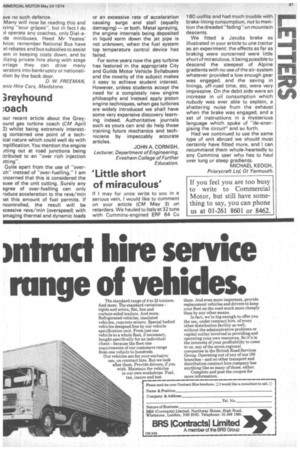3reyhound :oach
Page 79

If you've noticed an error in this article please click here to report it so we can fix it.
our recent article about the Greyound gas turbine coach (CM April 2) whilst being extremely interestig contained one point of a techical nature which could well do with -nplification. You mention the engine _Ming out at road junctions being ttributed to an "over rich injection atting".
Quite apart from the use of "overch" instead of "over-fuelling," I am 3ncerned that this is considered the ause of the unit cutting. Surely any agree of over-fuelling can only roduce acceleration to the revs/min tat this amount of fuel permits. If ncontrolled, the result will be Kcessive revs/min (overspeed) with amaging thermal and dynamic loads
or an excessive rate of acceleration causing surge and stall (equally damaging) — or both. Metal spraying, the engine internals being deposited in liquid xorm down the jet pipe is not unknown, when the fuel system top temperature control device has failed.
For some years now the gas turbine has featured in the appropriate City and Guilds Motor Vehicle Syllabuses and the noveity of the subject makes it easy to achieve student interest. However, unless students accept the need for a completely new engine philosophy and instead apply piston engine techniques, when gas turbines are widely introduced we shall have some very expensive discovery learning indeed. Authoritative journals such as yours can and do help those training future mechanics and technicians by impeccably accurate articles.
JOHN A. CORNISH, Lecturer, Department of Engineering, Evesham College of Further Education.




































































































































